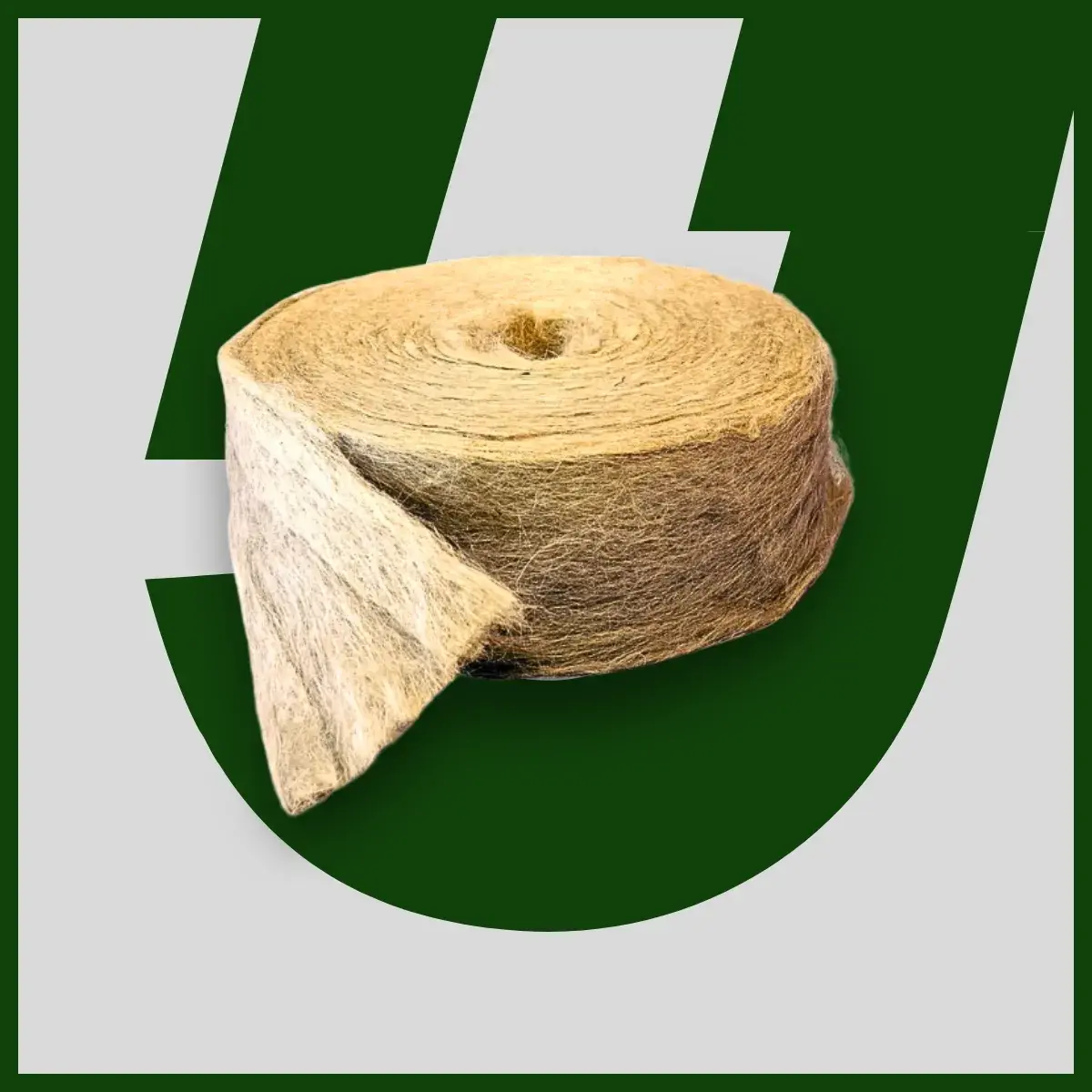
Jute Sliver / Kenaf / Mesta Sliver
-
Semi-processed jute fiber in sliver form for yarn and nonwoven production
-
Available in Tossa and Meshta types, sorted by quality and fiber length
-
Packed in 13 kg rolls, tied with rope, and palletized for bulk delivery
-
Supplied only in wholesale and export bulk quantities
Specification Details of Jute Sliver / Kenaf / Mesta Sliver
-
Material: Natural Jute (Tossa and Meshta)
-
Fiber Type: Long Fiber & Cut Fiber
-
Grades:
-
Meshta: White A, B, C
-
Tossa: BTE, BTC, BTD (Golden Yellow), BTCB
-
-
Moisture Content: Up to 16% max
-
Roll Weight: 13 kg per roll
-
Packing Method:
-
Each roll tied with 4 jute ropes
-
3 rolls wrapped in Hessian cloth or
-
Pallet packing: 72 rolls per pallet
-
Cut fiber packed in bales wrapped with jute rope
-
Description
Jute sliver is a critical raw input in the production chain of jute yarn and other downstream products. Supplied in both long fiber and cut fiber formats, this sliver is semi-processed for consistent uniformity and strength retention. It bridges the gap between raw jute and final spinning, ensuring high-quality output in further manufacturing stages. With well-defined grades like Meshta White A/B/C and Tossa BTE/BTC/BTD/BTCB, buyers can select sliver type based on desired end-product standards. All rolls are securely tied with jute rope to minimize breakage and wrapped in Hessian or packed on export pallets for optimized shipping.
Uses Details of Jute Sliver / Kenaf / Mesta Sliver
Jute sliver is extensively used across spinning mills, nonwoven industries, composite manufacturers, and eco-friendly material producers. Its semi-finished form offers flexibility for large-scale processing into diverse applications, particularly where sustainability, biodegradability, and tensile properties are essential.
-
Spinning and Yarn Production:
Jute spinning mills primarily consume Jute sliver to produce yarns in various counts. Long fiber slivers ensure better tensile properties and reduced breakage during spinning, particularly in fine-count yarn manufacturing. -
Kenaf and Mesta-Based Blends:
In nonwoven and paper-based industries, Kenaf and Mesta slivers offer a cost-effective and lightweight fiber blend. They’re particularly suited for producing agricultural mats, soil erosion controls, and reinforced jute sheets. -
Textile and Twine Industry:
Used as a raw material for jute twine, rope, and textile weaving, especially where heavier or more rigid fiber properties are preferred. Cut fiber variants suit the twine and coarse yarn sectors. -
Geotextile and Erosion Control:
Sliver from Tossa or Meshta is also blended into jute geotextiles for applications in slope stabilization, drainage control, and road construction projects. The semi-processed fibers retain their structure while allowing water permeability. -
Paper and Pulp Manufacturing:
Especially in regions where kenaf is cultivated, jute sliver is fed into pulping systems for natural and recycled paper manufacturing. Its long fiber content enhances paper tensile strength. -
Bio-Composites and Molded Boards:
Automotive and construction industries integrate jute sliver into molded fiber boards for door panels, partitions, and acoustic panels. The sliver form allows easier blending with polymeric matrices. -
Furniture and Handicrafts:
In niche handicraft markets, sliver is used for stuffing, padding, or binding in furniture and traditional craft manufacturing, including eco-cushions and matting products. -
Export and Import Bulk Supply:
Jute sliver remains one of the primary raw jute export items, especially to jute processing units in countries like China, Turkey, Egypt, and Thailand. Its standardized packaging and moisture control make it easier to handle in long-distance shipping scenarios.
Whether for fiber reinforcement, spun yarns, or eco-industrial applications, jute sliver serves as a vital base material. The variety in grades and the adaptability across end-uses position it as a preferred item in bulk B2B sourcing.
